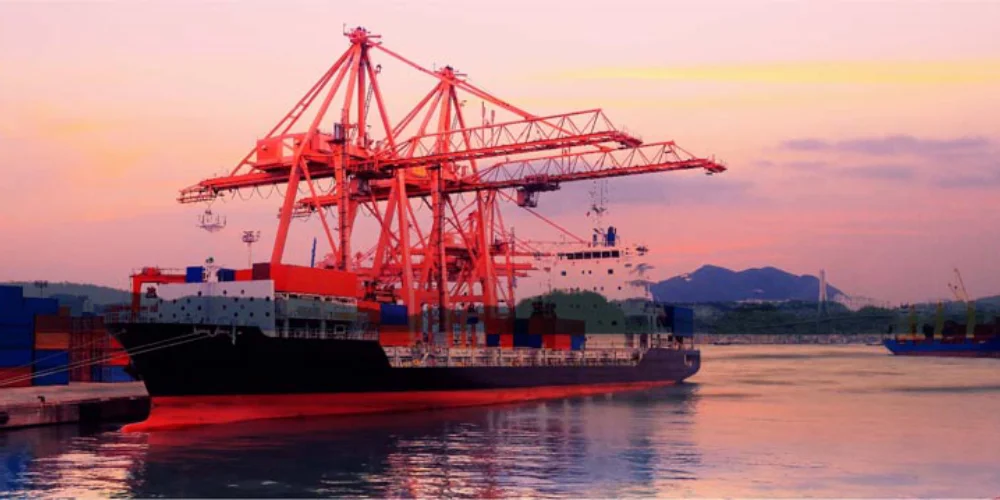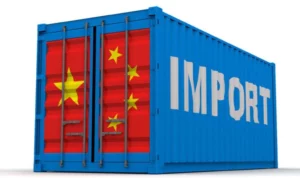China is better known for being an exporting country rather than an importer. It does, however, play an important role in the global economy. With the sheer size of its population, China cannot possibly supply every commodity its citizens need, and therefore need to import those commodities. Most of China’s imports are from other Asian countries.
Taking a look at China’s importing activities, one would be surprised to find out that China’s main imports are electronic equipment. This figure is slightly misleading though, as the statistics also include electronic components destined for assembly lines used to manufacture consumer electronics for the export market.
It is, however, interesting to note that in 2016 China imported good to the value of US$1.589 trillion, with 57.2% of these products coming from other Asian countries, 18.1% from European countries and only 10.3% from North America. Africa as a whole only counts for about 3.6% of Chinese imports, with this number consisting mostly of ores and minerals. Globally, China accounts for 18.5% (according to the latest CIA World Factbook) of all imports, making it a vital role player in the international community.
To learn about the export market in China, one can read this article. Unfortunately, being such a well-known exporter also cause China to have a trade surplus, more of which can be learned here.
Imports are likely to become more important for China – and therewith for
the rest of the world that is interested in doing business.
China’s Top Imports
As mentioned earlier, electronic equipment amounts to a total of 25.7% of what China imports. This does not, however, account for intermediate electronic parts, for appliances destined for exports. With the Chinese economy growing, the demand for consumer electronics is on the rise however, causing China to import that which is cannot meet the demand for. This statistic does not even include computers.
With China being a production powerhouse, it comes as no surprise that its second largest import is electrical machinery used in these processes. Electrical machinery and equipment, account for 26.1% of imports.
China’s third biggest import is oil. Although China is the 4th largest oil producer in the world, surpassing the US in 2016, the local demand for oil is higher than it can produce, making China a net importer of this important commodity. Oil and other mineral fuels account for 11.1% of all Chinese imports.
At a close fourth place of 9.3%, are computers and other machinery, with ores, slag and ash coming in at 5.9% for a fifth place. Compared in value, this may not sound like much, but doing the calculation one soon finds out that this amounts to 32 tons of ore a second.
Sixth place is awarded to medical operations, which reached a total of $92.6 billion (5.8%) in 2016. This statistic serves to illustrate that China also cannot supply in the demand for medical apparatus, and therefore has to import some equipment.
Cars are the seventh most imported product in China at 4.5%. Although China is the largest producer of automobiles in the world, certain makes and models are not available locally.
The top 10 of imports to China with respect to all trade partners (2016):
- Electronic Equipment
- Oil
- Machines, engines, pumps
- Ores, slag, ash
- Medical, technical equipment
- Vehicles
- Plastics
- Organic chemicals
- Copper
- Oil Seed
Development of Chinese Imports
Currently China is the 2nd largest importer in the world (after overtaking Germany in 2008), behind the United States with the value of imports totaling $1.587 trillion according to the World Factbook. This statistic however, also includes goods marked for re-export.
Previously China’s economy was heavily focused on intermediate goods but there has been a gradual shift towards active consumption. Total imports to China had been steadily growing, reaching its peak in 2016 when it surpassed $1.3 trillion. With China starting to welcome foreign investors, this number can only grow in 2017.
Seeking to attract foreign investments, China has reduced tariffs previously applied to imported consumer goods. Doing this, it also tried to address the increasing trade imbalance which resulted from the fall in demand from imported goods. This reduction in tariffs should address the issue of falling imports while also helping to ease the changeover to a consumption-based economy.
Imported articles are often seen as being of higher quality by Chinese consumers.
Import Duties on Imports to China
When importing into China there are a range of different taxes, duties and fees that may apply to products. While mainly duties have been lowered in previous years to increase consumer demand the basic taxes are still in place.
The main 3 types of charges you will face are: VAT charges, Consumption Tax and Customs Duties.
VAT is charged at the flat rate of 17% and is paid at the time of customs clearance. Paper, food, and heating products have a lower VAT rate of 13%, while technology related industries only pay a VAT rate of 6%. If the goods are imported you are able to reclaim the VAT charged when the goods are sold.
Consumption Tax on Imports to China
Consumption tax focuses mainly on products that could be considered luxury purchases, with a few exceptions. It is only paid on a select few products like high-end watches, non-renewable petroleum products and products that use high energy consumption such as vehicles. The rate of Consumption Tax varies depending on the product so prior research should be undertaken. They are paid on top of VAT charges and the charges are paid within 15 days after Customs issues the Import CT Bill of Payment.
With regard to customs duties, the following types of charges are the most common when importing goods into China. Cars with an engine capacity of larger than 4000cc and other environmentally unsound goods bear a burden of 20% over and above the VAT that are levied. Sin tax also forms part of this, with tobacco and liquor being also being tax under this scheme, with taxation ranging from 50% to 15%.
Cosmetics were previously taxed with a flat rate of 30%, but have been redesigned in 2016 to allow for non-luxury cosmetics to be excluded and the overall rate to be reduced to 15%. Other items that are taxed include jewelry, personal hygiene products and fuel. Standard motor cars are also subject to consumption tax ranging between 3% and 8%. Fireworks are taxed at 15%
Some other Chinese tariff rates also include:
- Most-favored-nation duty (MFN)
- Special preferential duty
- Tariff rate quota (TRQ)
- General duty rates
- Conventional duty
- Temporary duty rates
All these are covered under the customs article found by clicking here.






